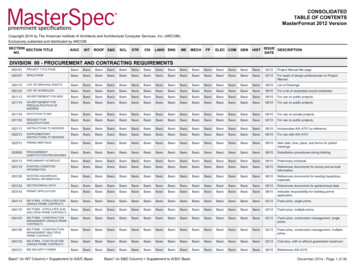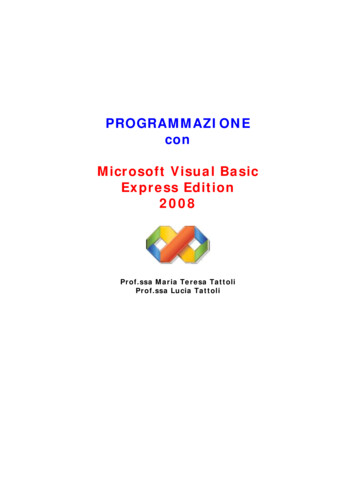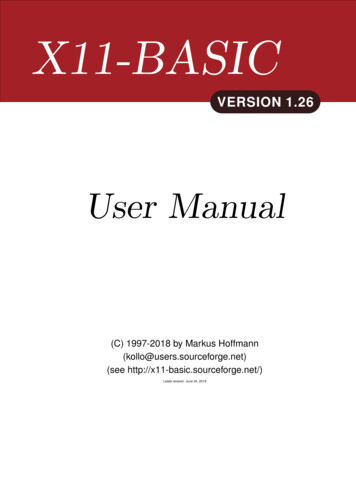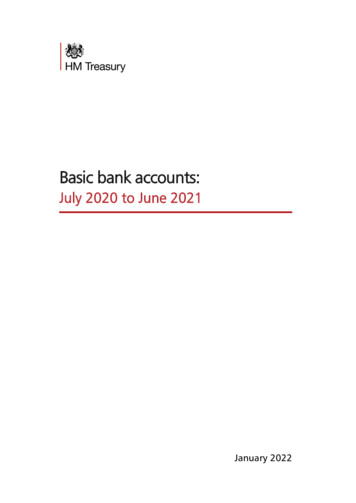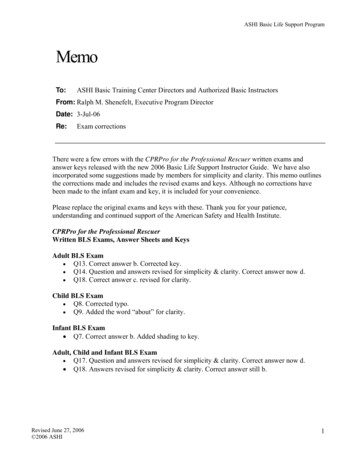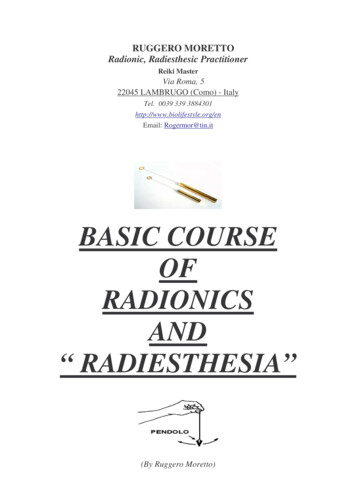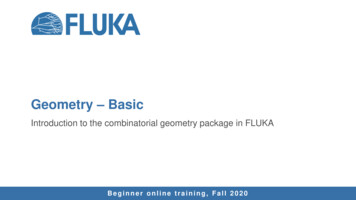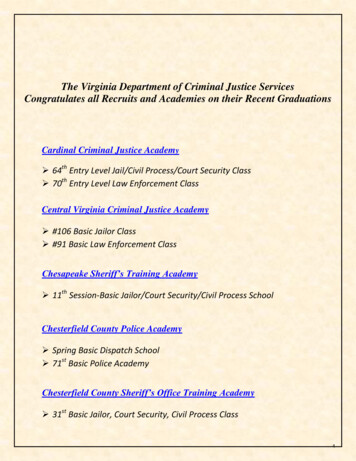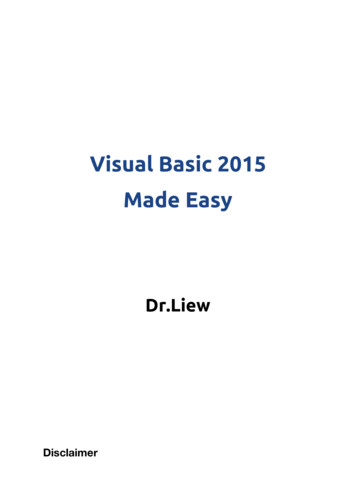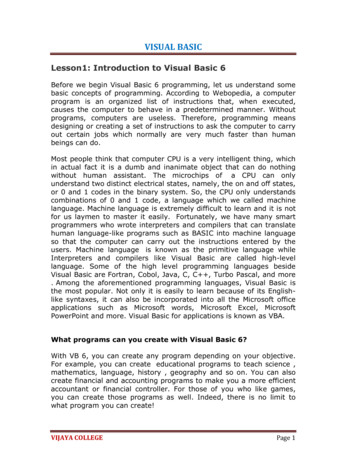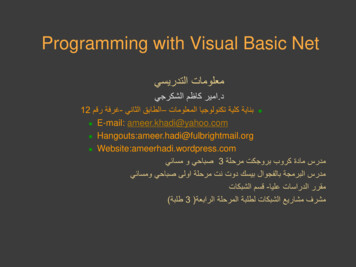
Transcription
K to 12 BASIC EDUCATION CURRICULUMSENIOR HIGH SCHOOL – CORE SUBJECTGrade: 11/12Core Subject Title: Reading and Writing SkillsSemester: 2nd SemesterNo. of Hours/ Semester: 80 hours/semesterPre-requisite:Core Subject Description: The development of reading and writing skills as applied to a wide range of materials other than poetry, fiction and dramaCONTENTRWS11.1.Reading andThinkingStrategies acrossText typesA. Text asConnectedDiscourseB. techniques inSelecting andOrganizingInformationC. Patterns ofDevelopmentD. Properties of awell-written TextCONTENTSTANDARDPERFORMANCESTANDARDLEARNING COMPETENCIESThe learner.The learner.The learner.realizes thatinformation in a writtentext may be selectedand organized toachieve a particularpurpose.critiques a chosen sampleof each pattern ofdevelopment focusing oninformation selection,organization, anddevelopment.1. Describes a written text as connected discourse2. Distinguishes between and among techniques inselecting and organizing informationa. brainstorming listb. graphic organizerc. topic outlined. sentence .3EN11/12RWS-IIIa-2.43. Distinguishes between and among patterns ofdevelopment in writing across disciplinesa. narrationb. descriptionc. definitiond. exemplification / classificatione. comparison and contrastf. cause and effectg. problem - solutionh. EN11/12RWS-IIIbf-3.84. Identifies properties of a well-written texta. organizationb. coherence and cohesionc. language used. Igh-4.4K to 12 Senior High School Core Curriculum – Reading and Writing Skills December 2013EN11/12RWS-IIIbf-3Page 1 of 8
K to 12 BASIC EDUCATION CURRICULUMSENIOR HIGH SCHOOL – CORE SUBJECTCONTENTRWS11.2. Textand ContextConnections(Critical nds therelationship of a writtentext and the context inwhich it was developed.writes a 1000-wordcritique of a selected texton the basis of itsclaim/s, context, andproperties as a writtenmaterial.A. Critical Readingas Looking forWays of Thinking1. Explicit andImplicit Claims in aText2. Context of TextDevelopmentB. Critical Readingas Reasoning1. FormulatingEvaluativeStatements2. DeterminingTextual EvidenceRWS11.3.Purposeful Writingin the Disciplinesand for ProfessionsLEARNING COMPETENCIES1. Explains critical reading as looking for ways ofthinking2. Identifies claims explicitly or implicitly made in awritten texta. Claim of factb. Claim of policyc. Claim of value3. Identifies the context in which a text was developeda. Hypertextb. Intertextproduces each type ofacademic writing andprofessionalcorrespondence followingthe properties of wellwritten texts and processapproach to -IVac-7.24. Explains critical reading as reasoningEN11/12RWS-IVac-85. Formulates evaluative statements about a text reada. Formulates assertions about the content andproperties of a text readb. Formulates meaningful counterclaims inresponse to claims made in a text readEN11/12RWS-IVac-96. Determines textual evidence to validate assertionsand counterclaims made about a text readunderstands therequirements ofcomposing academicwriting and professionalcorrespondence.CODE7. Explains how one’s purpose is a crucial considerationin academic and professional writing8. Identifies the unique features of and requirements incomposing texts that are useful across disciplinesa. Book Review or Article Critiqueb. Literature Reviewc. Research Reportd. Project Proposale. Position PaperK to 12 Senior High School Core Curriculum – Reading and Writing Skills December g-12.3EN11/12RWS-IVdg-12.4Page 2 of 8
K to 12 BASIC EDUCATION CURRICULUMSENIOR HIGH SCHOOL – CORE ARNING COMPETENCIES9. Identifies the unique features of and requirements incomposing professional correspondencea. Resumeb. Application for College Admissionc. Application for Employmentd. Various forms of Office CorrespondenceK to 12 Senior High School Core Curriculum – Reading and Writing Skills December j-13.4Page 3 of 8
K to 12 BASIC EDUCATION CURRICULUMSENIOR HIGH SCHOOL – CORE SUBJECTGLOSSARY Connected Discourse coherence "Connected speech is more than just a string of individual target segments joined together in series, since each segment isliable to influence the segments that surround it. The precise form that these influences take is determined by the particularlanguage in question, and so the phonology of connected speech is part of the phonology of the language that the child has tomaster . . ." (Sara Howard, Bill Wells, and John Local, "Connected Speech." The Handbook of Clinical Linguistics, ed. by MartinJ. Ball, Michael R. Perkins, Nicole Muller, and Sara Howard. Blackwell, 2008)Connected speech, or connected discourse, in linguistics, is a continuous sequenceof sounds forming utterances or conversations in spoken language. Analysis of connected speech shows sounds changesaffecting linguistic units traditionally described as phrases, words, lexemes, morphemes, syllables, phonemes or phones.[1] Thewords that are modified by those rules will sound differently in connected speech than in citation form (canonicalform or isolation form). http://en.wikipedia.org/wiki/Connected discourseIt is the unifying element in good writing. It refers to the unity created between the ideas, sentences, paragraphs and sectionsof a piece of writing. Coherence is what gives a piece of writing its flow. It also gives the reader a sense of what to expectand, therefore, makes the reading easier to follow as the ideas appear to be presented in a natural, almost automatic, way erenc.htmIn Linguistics, it is the property of unity in a written text or a segment of spoken discourse that stems from the links among itsunderlying ideas and from the logical organization and development of its thematic erence cohesionThe use of repetition, transitional expressions, and other devices (cohesive cues) to guide readers and show how the parts ofa composition relate to one other. http://grammar.about.com/od/c/g/cohesionterm.htmIn Linguistics, it is the property of unity in a written text or a segment of spoken discourse that stems fromlinks among its surface elements, as when words in one sentence are repeated in another, andespecially from the fact that some words or phrases depend for their interpretation upon material inpreceding or following text, as in the sequence Be assured of this. Most people do not want to fight.However, they will do so when provoked, where this refers to the two sentences that follow, they refers back to most people, do so substitutes for the preceding verb fight, and however relates theclause that follows to the preceding sentence. elopment is the process by which you support or explain the central idea of a paragraph, essay, or other piece of writing.Depending on your purpose—what you want to accomplish—you can use several methods of development:Patterns of Development rationCause and EffectK to 12 Senior High School Core Curriculum – Reading and Writing Skills December 2013Page 4 of 8
K to 12 BASIC EDUCATION CURRICULUMSENIOR HIGH SCHOOL – CORE SUBJECT m/sites/0070400555/student view0/writing-999/paragraph patterns.html Hypertext presents a new way to read on-line text that differs from reading standard linear text. Text is typically presented ina linear form, in which there is a single way to progress through the text, starting at the beginning and reading to the end.However, in hypertext, information can be represented in a semantic network in which multiple related sections of the text areconnected to each other. A user may then browse through the sections of the text, jumping from one text section to another.This permits a reader to choose a path through the text that will be most relevant to his or her interests.HypertextThe features in hypertext supply flexibility to the reader when compared to reading linear text such as books. Clearly some ofthis flexibility does exist in books (e.g. table of contents and indexes), but it is not as widely used or exploited. Hypertextpermits readers to use these features automatically rather than requiring readers to manually refer to them as needed. Thisprovides additional control to the reader in determining the order that the text is to be read, and allows the reader to read thetext as if it were specifically tailored to the reader's background and interests. This flexibility does promise an advantage ofpersonalization and eases the burden of finding information, However, is this flexibility actually good or useful to the reader? Inter-textInter-textualityIntertextuality is the shaping of a text meaning by another text. Intertextual figuresinclude: allusion, quotation, calque, translation, pastiche and parody. An example of intertextuality is an author’s borrowingand transformation of a prior text or to a reader’s referencing of one text in reading tyDerived from the Latin intertexto, meaning to intermingle while weaving, intertextuality is a term first introduced by Frenchsemiotician Julia Kristeva in the late sixties. In essays such as "Word, Dialogue, and Novel," Kristeva broke with traditionalnotions of the author's "influences" and the text's "sources," positing that all signifying systems, from table settings to poems,are constituted by the manner in which they transform earlier signifying systems. A literary work, then, is not simply theproduct of a single author, but of its relationship to other texts and to the strucutures of language itself. "[A]ny text," sheargues, "is constructed of a mosaic of quotations; any text is the absorption and transformation of another" (66).Intertextuality is, thus, a way of accounting for the role of literary and extra-literary materials without recourse to traditional notions ofauthorship. It subverts the concept of the text as self-sufficient, hermetic totality, foregrounding, in its stead, the fact that all literaryproduction takes place in the presence of other texts; they are, in effect, palimpsests. For Roland Barthes, who proclaimed the deathof the author, it is the fact of intertexuality that allows the text to come into being:Any text is a new tissue of past citations. Bits of code, formulae, rhythmic models, fragments of social languages, etc., pass into thetext and are redistributed within it, for there is always language before and around the text. Intertextuality, the condition of any textwhatsoever, cannot, of course, be reduced to a problem of sources or influences; the intertext is a general field of anonymousformulae whose origin can scarcely ever be located; of unconscious or automatic quotations, given without quotation marks. ("TheoryK to 12 Senior High School Core Curriculum – Reading and Writing Skills December 2013Page 5 of 8
K to 12 BASIC EDUCATION CURRICULUMSENIOR HIGH SCHOOL – CORE SUBJECTof the Text" 39).Thus writing is always an iteration which is also a re-iteration, a re-writing which foregrounds the trace of the various texts it bothknowingly and unknowingly places and dis-places.Intertexts need not be simply "literary"--historical and social determinants are themselves signifying practices which transform andinflect literary practices. (Consider, for example, the influence of the capitalist mode of production upon the rise of the novel.)Moreover, a text is constituted, strictly speaking, only in the moment of its reading. Thus the reader's own previous readings,experiences and position within the cultural formation also form crucial intertexts.The concept of intertexuality thus dramatically blurs the outlines of the book, dispersing its image of totality into an unbounded,illimitable tissue of connections and associations, paraphrases and fragments, texts and con-texts. For many hypertext authors andtheorists, intertextuality provides an apt description of the kind of textual space which they, like the figures in Remedio Varo's famous"Bordando el Manto Terrestre," find themselves weaving:a kind of tapestry which spilled out the slit windows and into a void, seeking hopelessly to fill the void: for all the other buildings andcreatures, all the waves, ships, and forests of the earth were contained in this tapestry, and the tapestry was the world. (Pynchon 10)http://www2.iath.virginia.edu/elab/hfl0278.html A literature review is a text written by someone to consider the critical points of current knowledge including substantivefindings, as well as theoretical and methodological contributions to a particular topic. Literature reviews are secondary sources,and as such, do not report any new or original experimental work. Also, a literature review can be interpreted as a review ofan abstract accomplishment.Most often associated with academic-oriented literature, such as a thesis or peer-reviewed article, a literature review usuallyprecedes a research proposal and results section. Its main goals are to situate the current study within the body of literatureand to provide context for the particular reader. Literature reviews are a staple for research in nearly every academic field.http://en.wikipedia.org/wiki/Literature ReviewLiterature Review A literature review is an assessment of a body of research that addresses a research question. A literature review identifieswhat is already known about an area of study. It may also identify questions a body of research does not answer and make acase for why further study of research questions is important to a fieldProcess: It is a research journey with several steps: Framing a research question Searching relevant bodies of literatureK to 12 Senior High School Core Curriculum – Reading and Writing Skills December 2013Page 6 of 8
K to 12 BASIC EDUCATION CURRICULUMSENIOR HIGH SCHOOL – CORE SUBJECT Managing search results Synthesizing the research literature Writing an assessment of the literatureThe process is iterative—as you gain understanding, you’ll return to earlier steps to rethink, refine, and rework your literature ereviewK to 12 Senior High School Core Curriculum – Reading and Writing Skills December 2013Page 7 of 8
K to 12 BASIC EDUCATION CURRICULUMSENIOR HIGH SCHOOL – CORE SUBJECTCode Book LegendSample: EN11/12RWS-IIIa-1LEGENDSAMPLELearning Area and Strand/ Subject orSpecializationEnglishEN11/12First EntryUppercase Letter/sGrade LevelGrade 11/12Domain/Content/Component/ TopicReading and Writing SkillsRWS-Roman Numeral*Zero if no specific quarterLowercase Letter/s*Put a hyphen (-) in between letters to indicatemore than a specific weekQuarterThird QuarterIIIWeekWeek onea-Arabic NumberCompetencyK to 12 Senior High School Core Curriculum – Reading and Writing Skills December 2013describes a written text as connecteddiscourse1Page 8 of 8
K to 12 BASIC EDUCATION CURRICULUM SENIOR HIGH SCHOOL - CORE SUBJECT K to 12 Senior High School Core Curriculum - Reading and Writing Skills December 2013 Page 4 of 8 GLOSSARY Connected Discourse "Connected speech is more than just a string of individual target segments joined together in series, since each segment is
